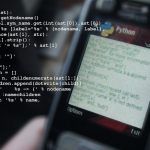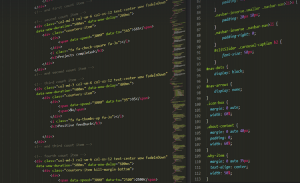A Quick Guide to Getting Started
Ever wished your home was a little smarter, maybe with lights that turn on automatically when you walk into a room? Or perhaps automating certain tasks based on the movement of people around your house? Well, Leviton motion sensor switches are here to bring your smart home dreams to life. But how do you program these bad boys to work their magic?
Programming your Leviton motion sensor switch may seem daunting at first, but fear not! This guide will walk you through the process in a way that’s easy to understand and even fun. It’s about giving your home a little personality, making it easier for you to navigate, save energy, and feel more comfortable.
Why Leviton Motion Sensor Switches?
Leviton is known for its quality and reliability in the world of electrical products. When you choose a Leviton motion sensor switch, you’re not just getting a product that works; you’re getting a piece of technology built with longevity and efficiency in mind.
What makes them stand out? Their smart switches are designed to be easy to program, even for those without a background in electrical engineering. They integrate seamlessly with popular home automation systems like Alexa, Google Assistant, and Apple HomeKit. This means you can control your lights, appliances, and other gadgets directly from your phone or voice assistant. Plus, the switches offer versatile options for controlling lighting, power, and even specific functions like garage door openers.
Getting Started: Understand Your Switch
Before diving into programming, take a moment to understand what you’re working with. Check the instruction manual that came with your Leviton switch. It will help you identify key components and familiarize yourself with the basic configuration setup.
Typically, this involves:
- **Switch Type:** Is it a standard wall-mounted switch or an integrated smart switch? This determines the steps of programming.
- **Wireless Capabilities:** Does your switch have Bluetooth or Wi-Fi connectivity, making it compatible with various smart home platforms?
- **Programming Options:** What sort of control options does your Leviton switch offer? Will you be using a traditional wall panel, an app, or voice commands for control?
Your Programming Journey Begins: Steps to Success
Now that you’ve got the basics down, it’s time to delve into the heart of the process. Here’s a general framework on how to program your Leviton switch:
- **Find Your Control Hub:** This could be a dedicated smart home hub like Hubitat or Google Home, or it might be integrated directly with your existing system through the app.
- **Familiarize Yourself with the App/Hub’s Interface:** Most of these devices have user-friendly apps or web interfaces. Use them to set up your account and familiarize yourself with their capabilities.
- **Connect Your Leviton Switch:** If it’s wireless, simply connect it through the app instructions. For wired switches, you may need a wiring diagram to ensure proper connection before programming.
- **Set Up Motion Zones:** This is your switch’s brain. Determine what areas you want to control with the motion sensor. You can often set up different zones for each room, creating more customized light and power control depending on activities.
Programming Magic: Making it Work
Once you’ve connected your switch and created your zones, it’s time to test the waters! The specific programming steps depend on your chosen device and features.
Here are some common ways to program your Leviton switches:
- **Manual Switching:** Some models allow you to manually turn the light on or off. This might be helpful if you want a quick solution for specific tasks, like switching on a lamp when entering a room.
- **Automatic On/Off Time Dials:** This feature is especially convenient for those who are always in a rush! Set your switch to automatically turn lights on and off at certain times or even based on the time of day or specific activities.
- **Voice Control Integration:** If you’re using a smart assistant like Alexa, you can easily program your Leviton switch for voice control – simply say “Turn on living room light” to activate it.
Beyond the Basics: Get Creative
With programming options at your fingertips, you can unleash your creativity! Create unique routines that streamline your daily life, like turning on lights when you unlock your door or setting up schedules for specific rooms based on time of day.
For example, if you’re leaving for work in the morning, you could program your Leviton switch to automatically turn off lights and power devices in your home. Or, set it up so that your living room lights dim as you approach home when driving past.









